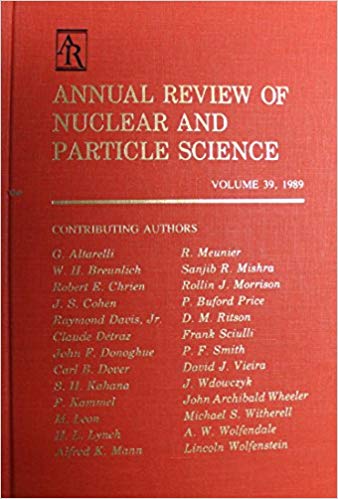特洛伊木马方法:天体物理学的核物理工具
IF 8.4
2区 物理与天体物理
Q1 PHYSICS, NUCLEAR
Annual Review of Nuclear and Particle Science
Pub Date : 2021-06-25
DOI:10.1146/annurev-nucl-102419-033642
引用次数: 19
摘要
特洛伊木马方法(THM)代表了一种间接途径来确定在天体物理能量下带电粒子之间反应的裸核天体物理s因子。这是通过测量一个合适的三体过程的准自由截面来实现的。该方法也适用于研究中子引起的反应,特别是在放射性离子束的情况下。本文将全面回顾THM背后的理论和实验特征。概述了最近的一些应用,以证明该方法在对选定的天体物理情景有重大影响的反应中的实际应用。预计《核与粒子科学年鉴》71卷的最终在线出版日期为2021年9月。修订后的估计数请参阅http://www.annualreviews.org/page/journal/pubdates。本文章由计算机程序翻译,如有差异,请以英文原文为准。
The Trojan Horse Method: A Nuclear Physics Tool for Astrophysics
The Trojan Horse Method (THM) represents an indirect path to determine the bare nucleus astrophysical S-factor for reactions among charged particles at astrophysical energies. This is achieved by measuring the quasi-free cross section of a suitable three-body process. The method is also suited to study neutron-induced reactions, especially in the case of radioactive ion beams. A comprehensive review of the theoretical as well as experimental features behind the THM is presented here. An overview is given of some recent applications to demonstrate the method's practical use for reactions that have a great impact on selected astrophysical scenarios. Expected final online publication date for the Annual Review of Nuclear and Particle Science, Volume 71 is September 2021. Please see http://www.annualreviews.org/page/journal/pubdates for revised estimates.
求助全文
通过发布文献求助,成功后即可免费获取论文全文。
去求助
来源期刊
CiteScore
21.50
自引率
0.80%
发文量
18
期刊介绍:
The Annual Review of Nuclear and Particle Science is a publication that has been available since 1952. It focuses on various aspects of nuclear and particle science, including both theoretical and experimental developments. The journal covers topics such as nuclear structure, heavy ion interactions, oscillations observed in solar and atmospheric neutrinos, the physics of heavy quarks, the impact of particle and nuclear physics on astroparticle physics, and recent advancements in accelerator design and instrumentation.
One significant recent change in the journal is the conversion of its current volume from gated to open access. This conversion was made possible through Annual Reviews' Subscribe to Open program. As a result, all articles published in the current volume are now freely available to the public under a CC BY license. This change allows for greater accessibility and dissemination of research in the field of nuclear and particle science.

 求助内容:
求助内容: 应助结果提醒方式:
应助结果提醒方式:


